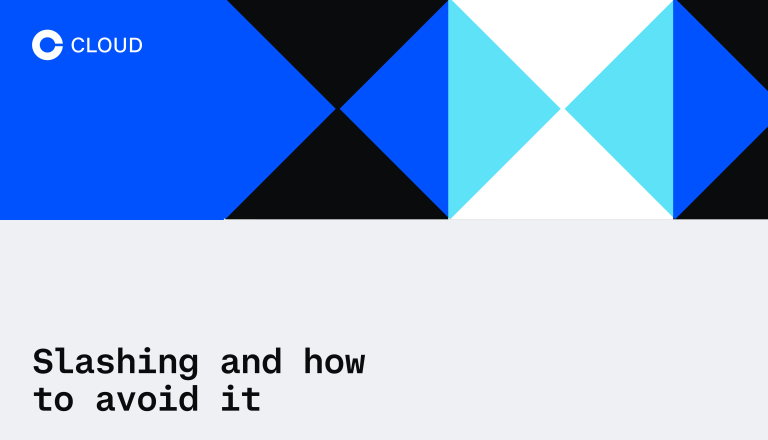How to avoid getting slashed
January 26, 2022
The potential for “slashing” can be a nightmare for anyone running participation nodes on proof of stake (PoS) blockchain networks. But what is slashing — and how can it be avoided?

Slashing — a mechanism built into blockchain protocols to discourage validator misbehavior — is designed by protocol creators to encourage security, availability, and network participation. Each protocol will have its own specific slashing mechanism but the effect is the same: if a validator behaves abnormally on the network, it will lose a predefined percentage of its tokens.
In most networks, slashing is triggered by one of two conditions: validator downtime or double signing. Both are counterbalanced considerations that should be taken very seriously. Typically, though, downtime results in a very small penalty being imposed (for example, 0.1% of tokens) whereas double signing can incur a much higher one (e.g. 5%).
How can slashing be avoided?
Staking providers across the board do not cover slashing losses, whatever their cause. Because the penalty for double signing is higher, Coinbase Cloud works to reduce the chances of slashing by prioritizing double signing prevention over downtime. We make sure that there are never two signing nodes online at the same time for any given customer’s cluster.
Infrastructure providers that prioritize downtime mitigation above all else — to avoid missing participatory rewards, for example, and downtime slashing — can be too aggressive. Bringing a backup validator online when your primary validator experiences temporary issues introduces the risk of double signing. Both Cosmos and Terra have suffered their own slashing incidents when validators double-signed blocks.

Double-signing, or signing two blocks at the same block height, is an activity that triggers slashing.
Our platform allows only one signing node to be online at any given time for a customer’s cluster. As a result, our infrastructure provides signing nodes that are ready and waiting to be used but not able to begin until our block-signing monitor signals that it is safe to do so.
In the rare event of an outage at a cloud provider or a regional signing infrastructure, Coinbase Cloud ensures that the primary validator cannot come back online before the signing node is moved to another available region. And we double up with an intervention system with block signing lock software to prevent human error. Compared to a manual process, event response on the Coinbase Cloud platform dramatically minimizes downtime and the risk of slashing for our customers.
We are in the process of adding additional protections to enhance our service and further reduce the likelihood of a critical event.
In short, slashing is always a risk when participating on PoS networks — but we do our best to ensure it doesn’t impact our customers.